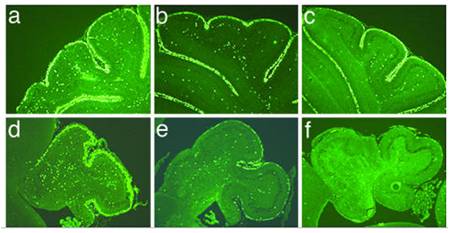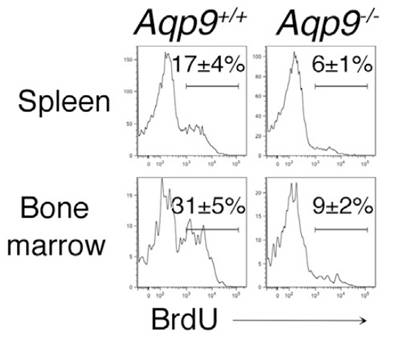A recent Cell publication from Susan Kaech’s lab at Yale University shows the use of Anti-BrdU, clone BU20a in flow cytometry (FACS) analysis. The paper reports on the metabolic profile of CD8+ memory T cells and the previously unknown metabolic role of IL-7.
BU20a specifically recognises bromodeoxyuridine (BrdU), a particularly useful analogue of thymine which is taken up into the DNA of proliferating cells. Due to this, BU20a has applications in IHC, in order to enable the identification of proliferating cells in a tissue section and in FACS where it can be used to identify cells in S phase.

Image published in Zindy et al. 2006. Proc Natl Acad Sci USA 103(31):11579-83
BU20a was originally developed by Jacqueline Cordell during her time at Oxford University’s Leukaemia Lymphoma Research antibody facility. It was developed in order to improve specific detection of cells in the S-phase of the cell cycle. Previously polyclonal antibodies had been used; however this had raised crossreactivity issues. Cordell has extensive expertise in monoclonal antibody production and is an inventor of over 40 antibodies on Ximbio; including Anti-CD45RB [PD7/26] and Anti-EMA [E29].

Image published in Cui et al. 2015. Cell. 161(4):750-61.
View the datasheet for more information and publications.
Register with Ximbio to keep updated with news, events and developments within the Ximbio community.
